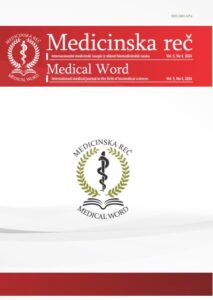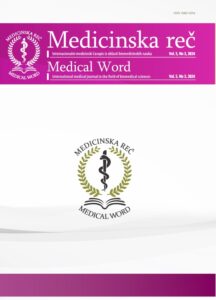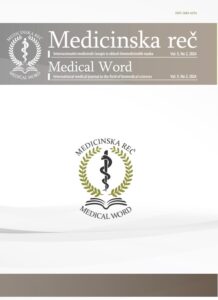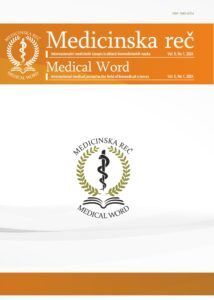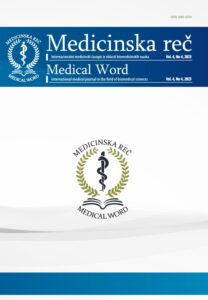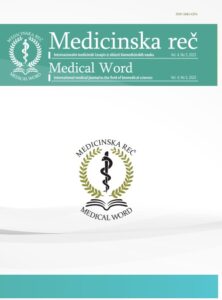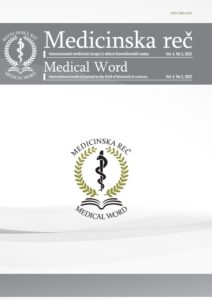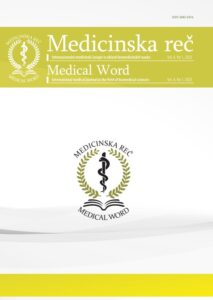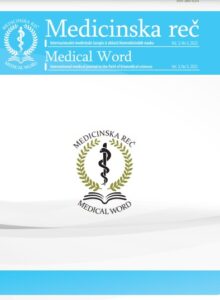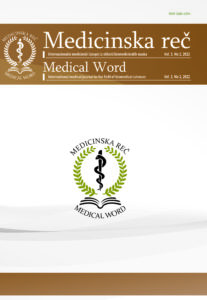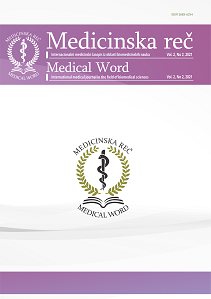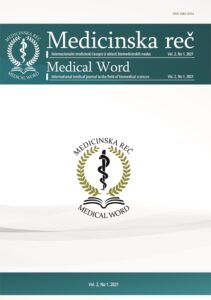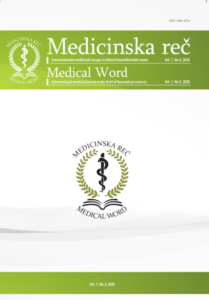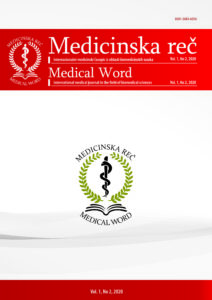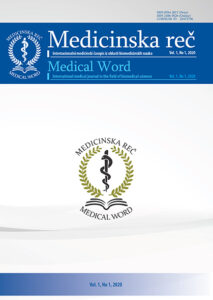Comparison between outcomes of drug-sensitive tubercolosis and multidrug-resistant tubercolosis
Medical Word 2021; 2(2): 61–67
https://doi.org/10.5937/medrec2102061A
Original Article
Abstract
Tuberculosis (TBC) is an infectious disease, along with its drug-resistant counterpart MDR-TBC, which can clinically manifest into a primary or post-primary TBC or MDR-TBC.
Aim – Determine the presence and frequency of MDR TBC within TBC infected patients, who were treated in The Hospital for pulmonary disease “Ozren”, and determine unwanted reactions and complications caused by first-line and second-line essential medications within the two groups of the infected.
Research determines that there were 96 patients diagnosed with Tuberculosis who were institutionalized in The Hospital for pulmonary disease “Ozren” between 2009 and 2012, who can be divided into two groups. Group A: Those infected by TBC, which can be treated by all anti-tuberculosis agents, and Group B: Those infected by MDR TBC. Data that are necessary for comparison between the two groups were collected from medical records and from staff involved in the treatment of patients. The data is processed using statistical methods: arithmetic means, standard deviation, percentages. All results are shown in tabular form or a graph, as absolute and relative numbers.
Results show that 6 out of 100 patients diagnosed with TBC are diagnosed with MDR TBC. Mild to moderate gastrointestinal difficulties were observed in both groups as unwanted therapy effects. Unwanted effects from medication are less frequent within those infected with MDR TBC, than those infected with TBC. The most frequent complications are hemoptysis and are only present within those infected with MDR TBC.
Key words: tuberculosis, multi drug-resistant tuberculosis, treatment, anti-tuberculosis agents
References
- Pejin D, Pavlović S, Kuruc V. Interna medicina, Novi Sad: Univerzitet Novi Sad; 2012.
- Pavlović S i dr. Tuberkuloza u praksi – savremena dijagnostika, terapija i prevencija, Novi Sad: Istitut za plućne bolesti Sremska Kamenica; 2004.
- Centar for Diease Control and Prevention, Tuberculosis (TBC) (raspoloživo na http//www.cde.gov/tb/publications/factsheets/drtb/xdrtb.htm)
- World Health Organization. Global Tuberculosis report 2019 [Internet]. Genewa: World Health Organization; 2019. Available from: https://apps.who.int/iris/rest/bitstreams/1257851/retrieve
- Rebić P, Kuruc V, Ćurčić R, Savić B. Priručnik za ambulantno lečenje obolelih od rezistentne tuberkuloze. Beograd: Ministarstvo zdravlja Republike Srbije; 2011.
- Stamenković M. Zdravstvena nega u internoj medicuni I i II, Ćuprija: Visoka medicinska škola strukovnih studija; 2012.


